Did you know that over 70% of motorcycle accidents could be avoided with stronger motorcycle handling skills? Mastery on two wheels isn't just about speed—it's about control, precision, and awareness.
Are you confident in your motorcycle handling skills? Every seasoned rider knows that true mastery isn’t measured by how fast you go, but how smooth and controlled your motorcycle ride feels—especially when the unexpected happens. In this comprehensive guide, we’ll unpack the essential motorcycle handling skills every motorcycle rider must master, whether you’re just starting or have years of experience. By focusing on these key riding skills, you’ll not only reduce your risk of accidents but elevate your entire riding experience to new levels of safety and enjoyment.
Whether you’re weaving through city streets, tackling winding country roads, or simply commuting through urban traffic, the right handling skills make the difference between an average and an exceptional motorcycle ride. Ready to level up? Let’s dive in and discover why skillful control is the ultimate key to enjoying every ride—and getting home safely.
Mastering Motorcycle Handling Skills: Why Every Motorcycle Rider Needs to Level Up Today
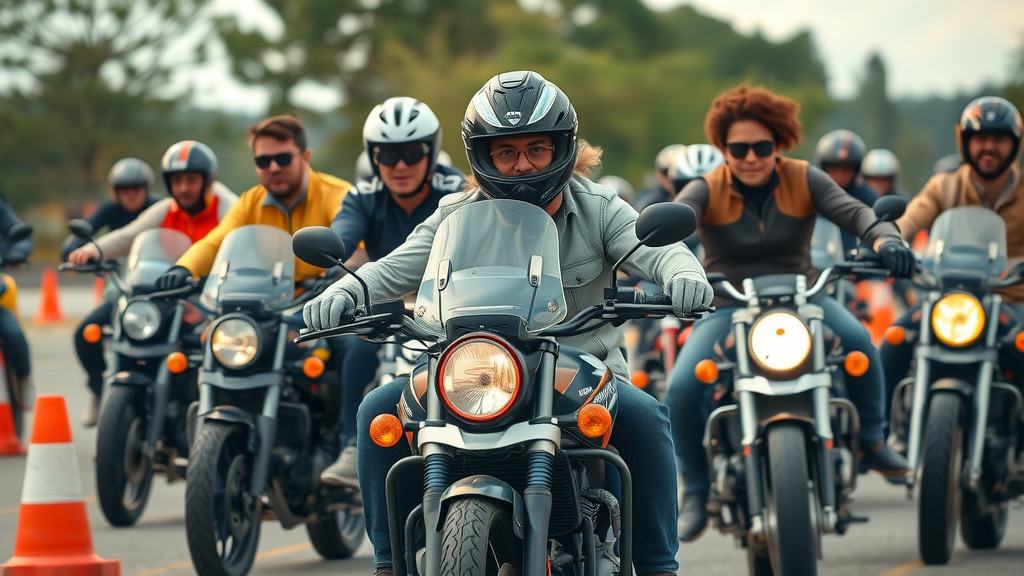
- Defining motorcycle handling skills and their vital role in safe motorcycle riding
- How improved riding skills reduce accident risk
- Examples of real-world scenarios where advanced handling skills make a difference
For every motorcycle rider, mastering motorcycle handling skills is vital—not just for performance, but ultimately for survival. Motorcycle handling skills refer to a set of core techniques and reactions that allow riders to control their motorcycles with confidence and precision. These skills include balancing at low speed, making tight turns without putting a foot down, and reacting instantaneously to hazards on the road. Riders with refined handling abilities can avoid accidents, stay upright in slippery conditions, and confidently maneuver through congested traffic.
Consider this: a sudden obstacle appears in your lane—only those with strong riding skills and sharp situational awareness can swerve, brake, or adjust quickly enough to avoid danger. Years ago, many motorcycle accidents were attributed to rider error rather than vehicle malfunction, highlighting the role skill plays in survival. Several studies reveal that enhanced motorcycle handling skills dramatically decrease the probability of crashes. In real-world scenarios, such as emergency stops or navigating slick corners, advanced skills make all the difference—sometimes in a split second.
Ultimately, learning and practicing these skills builds a foundation of safety, reduces your risk of mishaps, and ensures every motorcycle ride is both controlled and enjoyable. That’s why investing in ongoing skill development is the true mark of a smart, prepared motorcycle rider.
Essential Motorcycle Handling Skills for All Motorcycle Riders
| Essential Motorcycle Handling Skills | Description |
|---|---|
| Countersteering | Steering technique to change direction quickly and safely, crucial for every motorcycle rider faced with sudden hazards or sharp corners. |
| Emergency Braking | Safely stopping in the shortest possible distance using the front brake and rear brake, reducing the risk of collision on any motorcycle ride. |
| Low-Speed Control | Maintaining balance and precision at slow speeds—whether you’re in a parking lot or stuck in bumper-to-bumper traffic—keeps you upright and stable. |
| Lane Position | Optimal placement on the road for maximum visibility, safety, and space to react—an essential skill in urban and rural settings. |
| Friction Zone Mastery | Using the clutch lever for smooth control when starting, stopping, or crawling at low speeds. This skill is fundamental for every motorcycle rider. |
These essential motorcycle handling skills form the bedrock of safe motorcycling. Whether you’re tackling a tight U-turn at slow speed, performing an emergency stop using both the brake lever and both brakes, or adjusting your lane position due to unpredictable drivers, these techniques allow for precise and predictable control.
Each skill—when practiced and perfected—can mean the difference between a close call and an accident, or between feeling nervous and riding with confidence. If you haven’t already, take the time to hone these core skills before pushing further into advanced territory.
Developing Riding Skills: A Guide for Every Motorcycle Rider
- Start with the basics: Posture and ergonomics on your motorcycle ride
- Practice slow speed maneuvers for urban commuting and parking
- Perfect your clutch and throttle control in the friction zone
- Refine your emergency braking technique
- Countersteering for accurate and quick direction changes
- Optimize your lane position for maximum safety
- Anticipate traffic with situational awareness and the 12 second rule

Every motorcycle rider, regardless of experience, benefits from a structured approach to developing and refining their riding skills. Begin by ensuring your posture and body position align with your motorcycle’s ergonomics—this sets the foundation for all other skills. When practicing slow speed maneuvers, focus on balance, clutch control, and the subtle use of the rear brake to smooth out your movements. Practicing in a safe environment, like an empty parking lot, helps build confidence without risking traffic hazards.
Mastering the friction zone—using the clutch lever and throttle with precision—is essential for low-speed stability and maneuverability. Don’t overlook emergency braking; practice quick stops at various speeds, using both the front brake and rear brake to bring your motorcycle to a complete stop safely and quickly. Integrating countersteering will make your bike responsive in emergency swerves or sharp curves.
Your lane position isn’t just about staying visible; it also provides escape routes and maximizes your reaction time during any motorcycle ride. Above all, habitual situational awareness—ahead, behind, and beside your motorcycle—is the key to anticipating hazards. Applying the 12 second rule, where you scan ahead the distance you’ll cover in 12 seconds, will give you time to spot risks and adjust accordingly as your riding skill level improves.
Understanding the Friction Zone and Slow Speed Motorcycle Riding Skills
- What is the friction zone in motorcycle riding?
- Techniques for mastering low speed and slow speed control
- When and why these riding skills are critical for motorcycle riders
"Riding safety isn’t just about watching the road—it’s about understanding the feel of the machine underneath you." — Veteran Motorcycle Instructor
The friction zone is the area of clutch lever movement where the power from the engine starts to transfer to the rear wheel, but the clutch isn’t fully engaged. Finding and feeling this friction zone is crucial for smooth and controlled launches , especially at low speed. Without proper use of the friction zone, a motorcycle rider can stall the engine or lurch forward unexpectedly, affecting balance and control.
To master low speed and slow speed maneuvering, keep your clutch within the friction zone, use gentle throttle inputs, and apply the rear brake to control your speed. These techniques are exceptionally important in real-world situations such as U-turns, maneuvering through tight parking spaces, slow-moving traffic, or making tight turns to the left or right during a motorcycle ride. The more you practice these skills, the more comfortable and confident you’ll become riding a motorcycle at low speeds.
Many motorcycle riders struggle at first with maintaining balance at slow speeds, but deliberately practicing in an open space builds not just riding skill, but also the trust between rider and machine. A controlled, deliberate approach to clutch and throttle at low speeds lays the groundwork for safe motorcycling—even years ago, riders who prioritized slow speed control were statistically less likely to drop their bikes or tip over in awkward situations.
Advanced Motorcycle Handling Skills for Confident Motorcycle Riders
- Swerving and obstacle avoidance riding skill development
- Handling corners and curves at various speeds
- Mastery of high-speed and low-speed maneuvers
- Adapting handling skills for wet or uneven surfaces
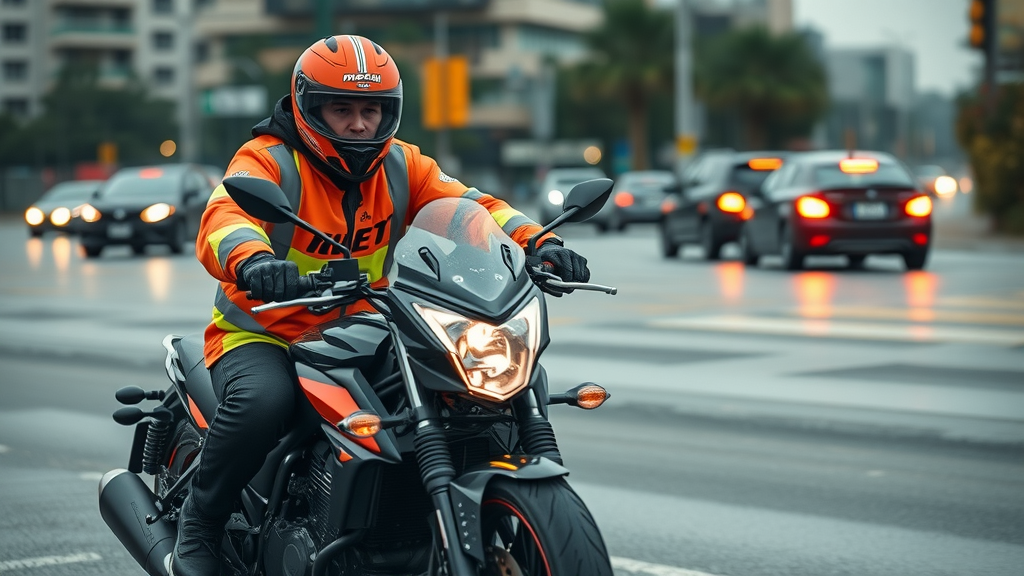
Once you’re comfortable with foundational skills, it’s time to increase your confidence with advanced motorcycle handling techniques. Swerving and quick obstacle avoidance are riding skills that may save your life if a car suddenly changes lanes or debris appears in your path. To practice, set up cones in a safe area, building the muscle memory needed to swerve with a firm, deliberate countersteer rather than abruptly jerking the handlebars.
Handling corners and curves requires an understanding of trajectory, appropriate speed adjustments, and body positioning. Enter the curve at a safe speed, look through the turn, and apply smooth throttle as you lean in, keeping the front wheel aligned for maximum traction. For both high-speed and low-speed maneuvers, using the right technique and keeping a calm, focused mind ensures you don’t overreact in a tight spot.
It’s also crucial to adapt your handling for wet or uneven surfaces: avoid abrupt inputs, keep the bike as upright as possible, and allow extra distance for braking. The best motorcycle riders practice these advanced skills routinely—often during an empty parking lot session or on advanced riding courses—so they’re ready to react, not just hope for luck.
The 12 Second Rule and Situational Awareness on Every Motorcycle Ride
- What is the 12 second rule and how does it enhance motorcycle handling skills?
- Practical applications for everyday motorcycle riding
- Using situational awareness to anticipate hazards and adjust riding skill
One fundamental concept for safer motorcycle riding is the 12 second rule . This means always scanning the road ahead to the point you’ll reach in 12 seconds—about the distance it takes at your current speed. By looking that far ahead, a motorcycle rider can spot stopped traffic, upcoming turns, merging vehicles, or road hazards well before they become immediate danger.
Applying the 12 second rule helps you adjust your speed, select the safest lane position, and mentally rehearse possible reactions. For example, if you see cars braking ahead, anticipate an emergency stop and position your bike accordingly. If a bicyclist or pedestrian is approaching the road, you’ll have time to slow down and cover your brake lever in advance. These habits dramatically enhance your overall riding skill by turning reaction into proactive action.
Situational awareness is not just for advanced riders—it’s a vital skill at every level. Continually checking traffic, road surface, and escape routes allows you to anticipate hazards, minimizing the risk of panic braking or target fixation. Coupled with practiced handling skills, strong situational awareness empowers you to ride confidently, no matter the road or weather conditions.
The Hardest Motorcycle Handling Skills and How Motorcycle Riders Can Overcome Them
- Why balancing at very low speed challenges even skilled motorcycle riders
- Combating target fixation and panic braking with effective riding skill practice
- Practical training strategies for consistent skill improvement
Many riders, even seasoned pros, admit that balancing at very low speed can be unexpectedly difficult. Keeping a motorcycle upright while crawling through traffic or executing a tight U-turn at slow speed requires fine control over clutch, throttle, and rear brake. The margin for error is slim—one overcorrection, and the front wheel could tuck or the bike could tip over. This is where mastery of the friction zone and feathering the rear brake make a huge difference in maintaining stability, especially in tight spaces.
Another significant challenge is overcoming target fixation —the tendency to focus on a hazard or obstacle so intently that you end up steering toward it. Panic braking, slamming on the front brake lever at the wrong moment (especially while turning), can lock the front tire and lead to a fall. The solution is deliberate, repeated practice of keeping your eyes on your intended path and braking progressively, rather than with sudden force.
Consistent skill improvement is about structured repetition: set up drills in an empty parking lot for low speed maneuvers, figure-eights, and controlled stops. Gradually build up difficulty and always focus on smooth and controlled throttle, clutch, and brake inputs. Regular, objective self-assessment ensures you continue advancing your riding skills and graduating past the hardest challenges.
The Most Important Motorcycle Riding Skill: Control, Confidence, and Consistency
"The most important skill for any motorcycle rider is not just speed—it’s maintaining complete control, regardless of the situation."
- Why situational control is considered the cornerstone of all motorcycle riding skills
- Techniques to develop and maintain ultimate rider control
It’s often said among seasoned riders that the true hallmark of a skilled motorcycle rider isn’t outright speed or daring stunts, but rather total control of your machine . This control means you can accelerate, slow down, execute tight turns, and avoid hazards—all with calm confidence and without hesitation. Such command is the product of consistent practice and an intimate understanding of your motorcycle’s dynamics in a variety of situations.
Techniques to build this control include: practicing progressive braking with both front and rear brakes, maintaining a flexible but strong body posture, and training yourself to make adjustments on the fly as traffic or road conditions change. Never let complacency creep in, even if you’ve spent years and thousands of miles in the saddle. Each motorcycle ride presents an opportunity to examine, sharpen, and reinforce the ultimate riding skill—control in every circumstance.
By blending control with confidence and consistency, every motorcycle rider can ride longer, safer, and with an unmatched sense of enjoyment. Control is not a one-time achievement; it’s a skill that grows with every mile, every new road, and every challenge overcome.
Basic Riding Skills Every Beginner Motorcycle Rider Must Master
- Mounting and dismounting the motorcycle correctly
- Throttle, clutch, and brake operation
- Smooth gear shifting
- Effective use of lane position
- Practicing turns, stops, and emergency maneuvers
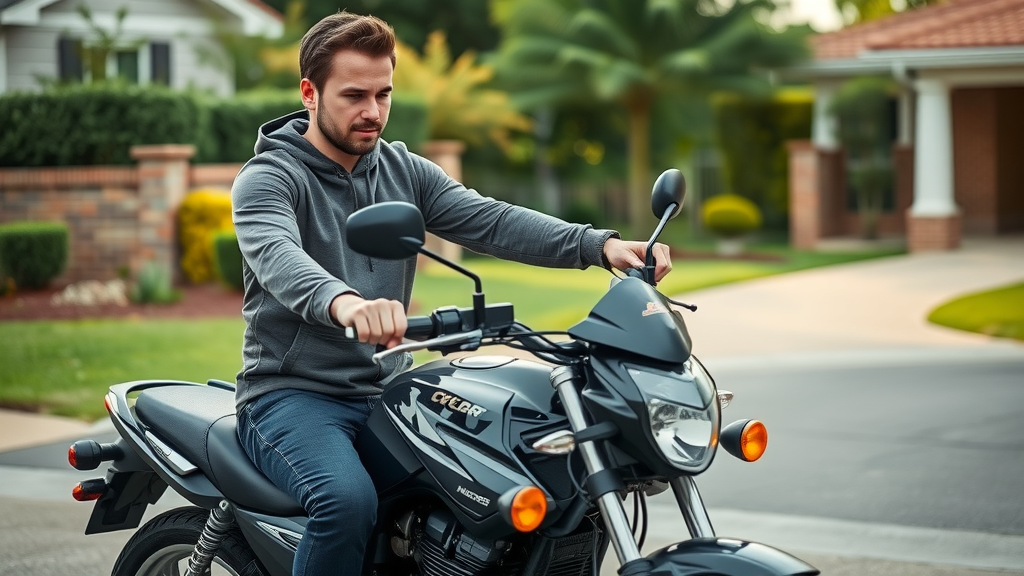
For beginner motorcycle riders , mastering the basics forms the essential groundwork for every future riding skill . The first step is learning to mount and dismount smoothly; do so in a safe, flat area and always keep the motorcycle upright and stable. Getting comfortable with the clutch lever, throttle, and both brakes is the next step. Practicing feathering the clutch and smoothly rolling onto the throttle builds muscle memory and boosts your confidence for every motorcycle ride.
Smooth gear shifting—both up and down—allows for fluid acceleration and deceleration, preventing abrupt movements or stalling. Always pay careful attention to your lane position: stay visible, choose the part of the lane that gives you space, and be alert to changing traffic patterns. Practicing basic maneuvers like controlled turns, stops, and quick braking (including simulated emergency stops) in an empty parking lot hones these skills and sets a strong foundation for more advanced techniques.
Remember, moving from beginner to skilled motorcycle rider doesn’t happen overnight. Dedicating time to deliberate practice, reviewing your basic riding skills after every motorcycle ride, and seeking feedback will help you develop safe habits that last a lifetime.
Frequently Asked Questions About Motorcycle Handling Skills
What is the 12 second rule on a motorcycle?
- The 12 second rule is a safety practice where a motorcycle rider scans the road ahead a distance that takes 12 seconds to travel. This gives ample time to spot and respond to hazards, greatly enhancing handling skills by improving anticipation and reaction.
What is the hardest thing to learn on a motorcycle?
- For most new riders, the hardest motorcycle handling skill is maintaining balance and control at low speeds—especially in tight maneuvers or traffic, where friction zone mastery and precise clutch control are essential.
What is the most important skill that a motorcyclist can develop?
- The single most critical skill is maintaining control under all circumstances—whether braking suddenly, making quick maneuvers, or navigating unexpected obstacles.
What are the basic riding skills?
- Basic skills include mounting/dismounting, starting and stopping smoothly, shifting gears, turning, and keeping proper lane position. These foundational skills create the base for advanced motorcycle handling.
Practical Exercises to Build Motorcycle Handling Skills at Home or in a Parking Lot
- Cones for weaving and practicing swerves
- Braking drills: controlled stops from various speeds
- U-turn space setup for slow-speed mastery
- Building muscle memory for lane position adjustments
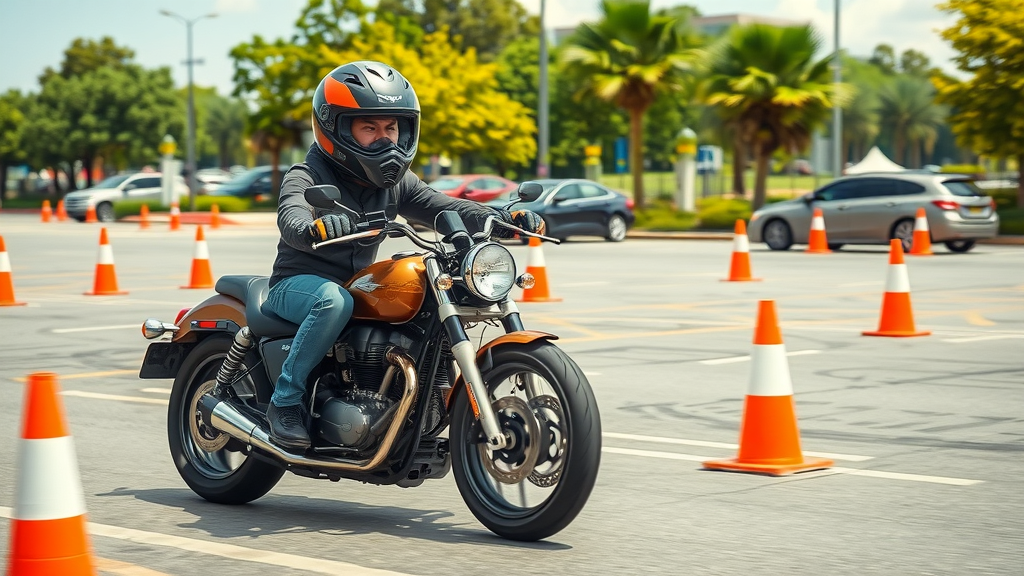
The best way to improve your motorcycle handling skills is consistent, focused practice in a controlled setting. Set up a series of traffic cones in an empty parking lot to create a weaving course. Practice maintaining balance and straight line stability at slow speed, keeping your eyes up and using the friction zone for smooth clutch and throttle inputs. Braking drills are also essential—practice emergency stops at different speeds with a focus on applying even, progressive pressure to the front brake and rear brake while keeping your front tire straight.
For slow-speed mastery, mark out a tight U-turn space and practice executing turns to both the left and right, focusing on smooth clutch control, rear brake modulation, and keeping your head up through the turn. Deliberate exercises like these not only build technical skill, but also develop the confidence and muscle memory needed for quick reactions during real-world motorcycle rides. Remember, regular practice is what separates an average rider from a truly skilled motorcycle rider.
Lastly, simulate different lane positions within your practice area, adjusting your path between the left, center, and right of a “lane.” This builds instinctual awareness of how subtle changes in position can maximize your reaction time and safety on the open road.
Expert Tips and Resources for Motorcycle Riders to Keep Improving
- Recommended advanced rider training courses
- Books, online communities, and forums for motorcycle riders
- How regular practice reinforces critical riding skills
"Skill comes from practice and patience. Every ride is an opportunity to improve your handling skills." — Professional Riding Coach
No matter your current skill level, there are always ways for every motorcycle rider to improve. Attending advanced rider training courses—such as those offered by the Motorcycle Safety Foundation or accredited local schools—provides targeted feedback and structured progression. These courses often include real-world scenario drills and push you beyond your comfort zone in a safe environment.
Another avenue for growth is engaging with books, online communities, and dedicated rider forums. Here, motorcycle riders share tips, discuss recent experiences, and offer advice for overcoming specific challenges—whether that’s fine-tuning slow-speed control or perfecting emergency braking. These resources keep you informed of evolving best practices and help you learn from the collective wisdom of more experienced motorcycle riders.
Above all, make practice a habit . Even after years of riding, it’s practice—through short sessions in a parking lot or a quick review before hitting the road—that cements good habits and keeps your motorcycle handling skills sharp and responsive.
Why Motorcycle Handling Skills are a Lifelong Journey for Motorcycle Riders
- The evolving challenges as riders gain experience
- The importance of continual assessment and practice for seasoned motorcycle riders
- How technology and new techniques shape modern motorcycle riding skills

- Motorcycle handling skills are foundational to rider safety and enjoyment
- Investing time in practice pays off in confidence and accident avoidance
- Even experienced motorcycle riders benefit from ongoing skill development
Your journey as a motorcycle rider doesn’t end when you pass your license test—or even after years on the road. New challenges arise as you encounter different bikes, road types, weather conditions, and traffic environments. Technology introduces advanced systems like traction control, ABS, and electronic ride modes that require understanding and adaptation. Continual self-assessment and open-minded learning ensure you remain at the top of your game, balancing acquired experience with evolving best practices.
Seasoned riders often enroll in refresher courses or try out new training opportunities to keep sharp. The best motorcycle riders are those who recognize that perfection is never the end goal—improvement is. The more you embrace the lifelong aspect of motorcycle handling skills, the safer and more rewarding every motorcycle ride becomes.
Remember, every ride, every lesson, and every challenge contributes to your legacy—not just as a motorcycle rider, but as a steward of safe, skillful, and enjoyable motorcycling.
Take Your Motorcycle Handling Skills to the Next Level
- Ready to improve your motorcycle handling skills? Enroll in advanced rider training, join local practice groups, or schedule weekend practice sessions. Every step you take will make you a more skilled, confident, and safe motorcycle rider.
Action steps: Commit to regular practice, sign up for advanced courses, and always seek ways to refine your control. Your dedication will transform every motorcycle ride—today, and for years to come.
Enhancing your motorcycle handling skills is crucial for both safety and enjoyment on the road. The article “10 Motorcycle Riding Tips for ALL Riders” offers valuable insights into techniques such as countersteering, visual lead, and defensive riding strategies, all aimed at improving your control and awareness. ( riders-share.com ) Additionally, “Top 5 Motorcycle Riding Skills Every Rider for Safety” emphasizes the importance of slow-speed maneuvers, emergency braking, and effective cornering techniques to reduce accident risks. ( spadalawgroup.com ) By integrating these practices into your routine, you can significantly enhance your riding proficiency and confidence.
 Add Row
Add Row  Add
Add 
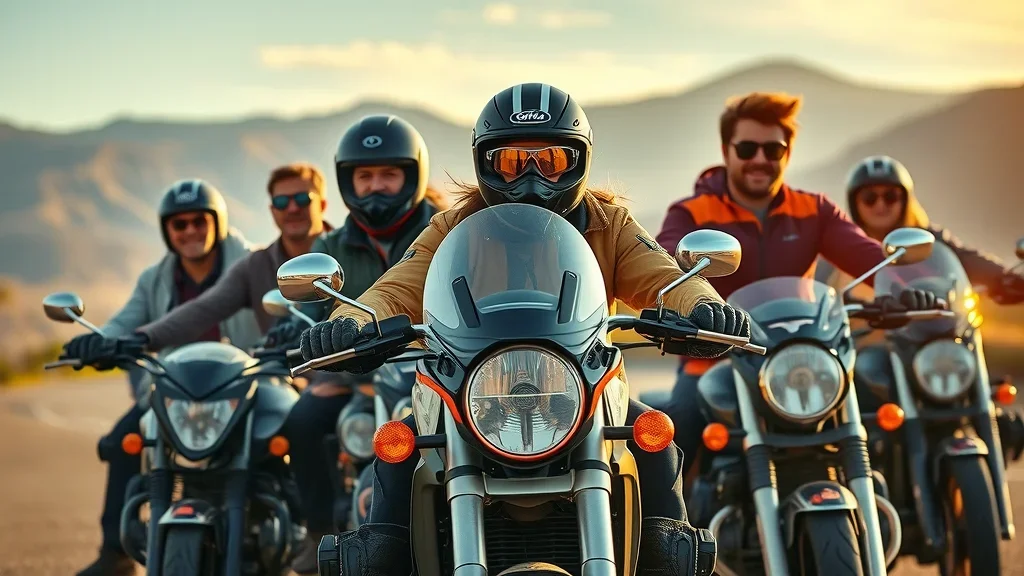

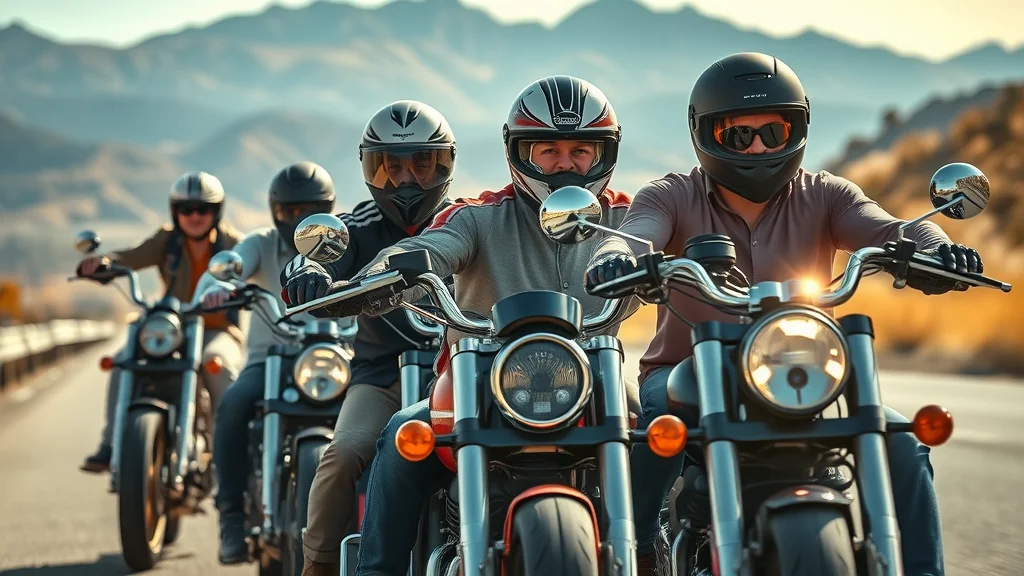
Write A Comment